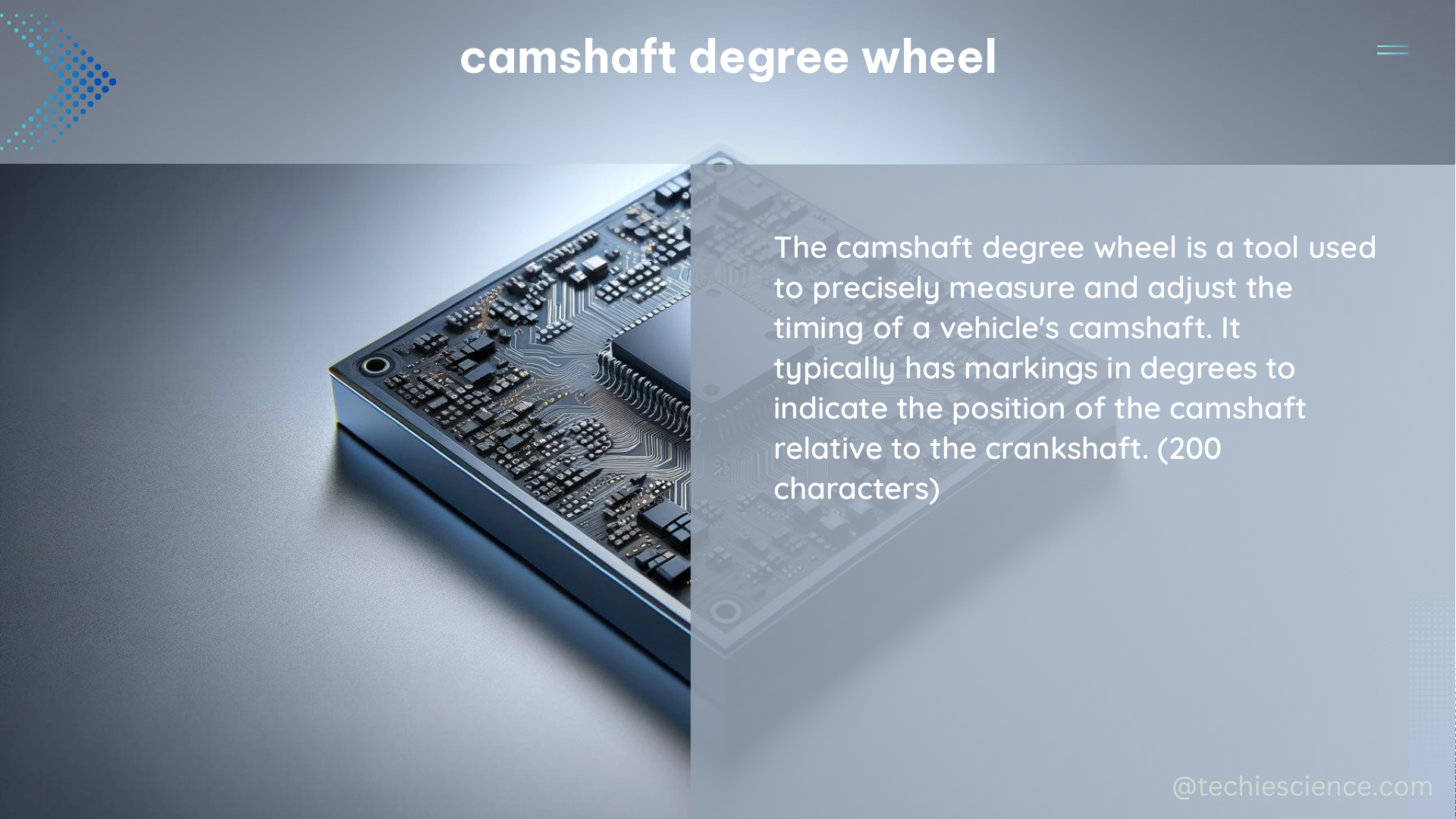The camshaft degree wheel is a crucial tool in the world of engine tuning and performance. It allows you to precisely measure the position of the camshaft, which is essential for optimizing engine performance and ensuring proper valve timing. In this comprehensive guide, we’ll dive deep into the intricacies of using a camshaft degree wheel, providing you with the knowledge and skills to become a true master of this essential tool.
Understanding the Camshaft Degree Wheel
The camshaft degree wheel is a circular dial that is typically mounted on the crankshaft of an engine. It is used to measure the position of the camshaft in relation to the crankshaft, which is crucial for determining the timing of the engine’s valves. The degree wheel is marked with increments of 1 degree, allowing you to precisely measure the position of the camshaft.
Accuracy and Calibration
Ensuring the accuracy of your camshaft degree wheel is of utmost importance. To check the accuracy, you can place the degree wheel on a large piece of paper and mark the positions of 0, 90, 180, and 270 degrees. Rotate the wheel to a position, such as 8 degrees After Top Dead Center (ATDC), and verify that the other four positions have the same 8-degree difference. If the differences are not consistent, your degree wheel is inaccurate. If the error is more than 1 degree, it’s time to find a new degree wheel. Errors of less than 1 degree are generally acceptable.
Measuring Cam Specifications
When degreeing the camshaft, you’ll measure the cam opening and closing points at a tappet lift of 0.050 inches. These measurements are then compared to the published data on the cam card from the cam manufacturer. For example, the exhaust may open at 64 degrees and close at 189 degrees, while the intake may open at 177 degrees and close at 299 degrees.
Using the Camshaft Degree Wheel

To use the camshaft degree wheel, you’ll need a few additional tools, including a dial indicator, a magnetic base, a lifter, a pointer, and piston stops.
Preparing the Engine
- Install the degree wheel on the crankshaft, using the harmonic balancer bolt.
- Position the pointer to indicate Top Dead Center (TDC).
- Install a piston stop over the top of cylinder number one.
Measuring Cam Timing
- Rotate the engine clockwise until the piston hits the stop. Record the reading on the degree wheel, which should be a number of degrees Before Top Dead Center (BTDC).
- Rotate the engine counter-clockwise until the piston hits the stop. Record the reading, which should be a few degrees ATDC.
- If the degree wheel is properly positioned at TDC, the readings should be an equal number of degrees on either side of TDC.
Calculating Cam Specifications
By measuring the cam opening and closing points at 0.050 inches of tappet lift and comparing them to the published data, you can determine the cam specifications without disassembling the engine. This information is crucial for optimizing engine performance and ensuring proper valve timing.
Advanced Techniques and Considerations
Measuring Multiple Cylinders
For engines with more than one cylinder, you can repeat the process for each cylinder to ensure consistent cam timing across the entire engine.
Adjusting Cam Timing
Once you’ve measured the cam timing, you may need to adjust the camshaft position to achieve the desired performance. This can be done by adjusting the cam sprocket or using a cam degree tool.
Troubleshooting and Common Issues
If you encounter any issues with your camshaft degree wheel, such as inconsistent readings or difficulty obtaining accurate measurements, it’s important to troubleshoot the problem. Common issues may include a worn or damaged degree wheel, improper installation, or interference from other engine components.
Conclusion
The camshaft degree wheel is an essential tool for any engine enthusiast or mechanic. By mastering the use of this tool, you can precisely measure and optimize the performance of your engine, ensuring that your vehicle is running at its absolute best. With the knowledge and techniques outlined in this comprehensive guide, you’ll be well on your way to becoming a true expert in the world of camshaft degree wheel measurement.
References:
– How to Make It Work: October 1995
– Camshaft Degree Measurement
– Using a Degree Wheel to Determine Cam
– Camshaft Degree Wheel Forum

The lambdageeks.com Core SME Team is a group of experienced subject matter experts from diverse scientific and technical fields including Physics, Chemistry, Technology,Electronics & Electrical Engineering, Automotive, Mechanical Engineering. Our team collaborates to create high-quality, well-researched articles on a wide range of science and technology topics for the lambdageeks.com website.
All Our Senior SME are having more than 7 Years of experience in the respective fields . They are either Working Industry Professionals or assocaited With different Universities. Refer Our Authors Page to get to know About our Core SMEs.